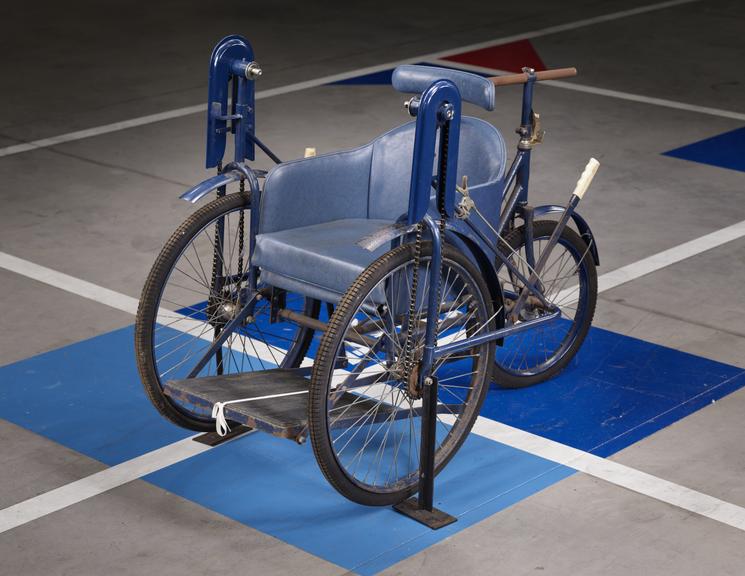
Self-propelled wheelchair, model 29
- Made:
- circa 1940-1950 in Bath
- maker:
- R A Harding, R. A.

Self-propelled wheelchair, with chain driven mechanism, model 29, made under UK Government contract by the R A Harding company, Bath, England, c1940-1950.
A number of designs have been developed that have allowed wheelchair users to physically propel themselves independently, rather than having to rely on others. This chair could move via two hand-operated chain-drives – the ‘hand pedals’ for which are missing in this example. This would turn the two large side wheels. A smaller, pivoting rear wheel provided steering and could be moved via movements of the user against the chairs back rest.
Based in the historic city of Bath, the R.A. Harding company was established in 1921. They were one of a number of companies who found a marketplace expanded by thousands of disabled veterans from the First World War. In the inter-war years Harding became a prominent maker of a range of ‘invalid carriages’, including designs of the famous ‘Bath chair’. During the Second World War they built carriages under government contract and the maker’s metal plate on this example announces that the chair is “Gov’t Property”.
Details
- Category:
- Therapeutics
- Object Number:
- 2018-459
- Materials:
- metal (unknown), rubber (unidentified), plastic (unidentified) and paint
- Measurements:
-
overall: 1064 mm x 755 mm x 1525 mm,
- type:
- wheelchair
- credit:
- Jane and Michael Lawrence



